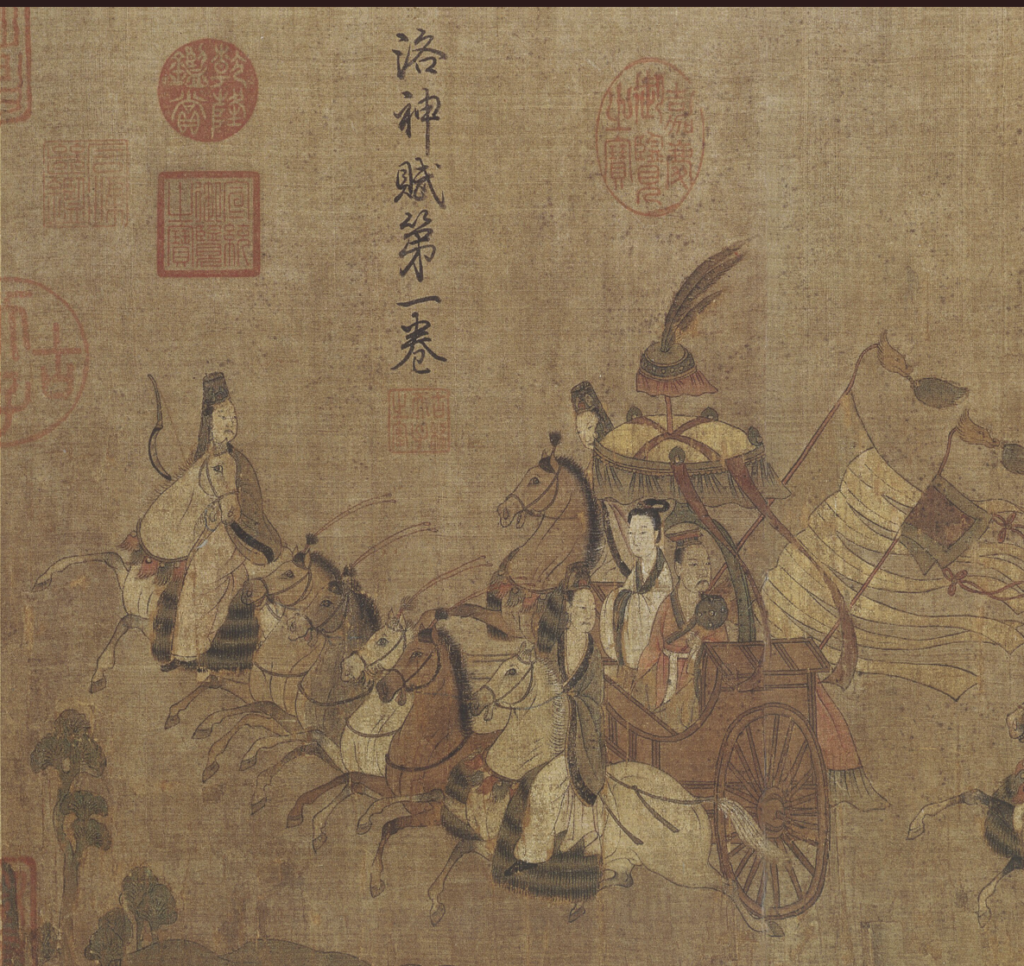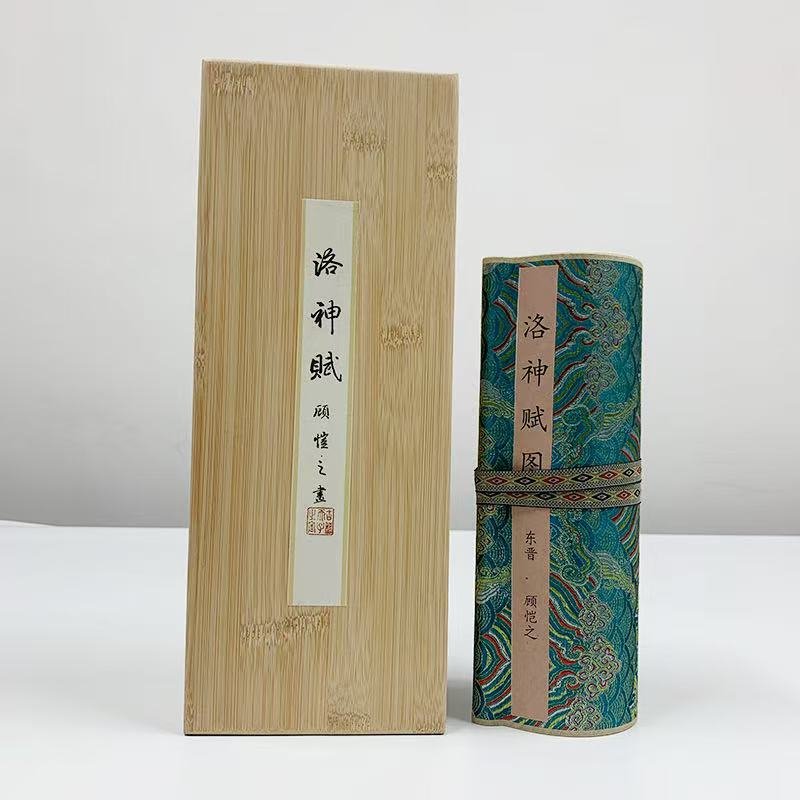Among China’s ancient masterpieces, The Nymph of the Luo River (Luoshenfu Tu 洛神赋图), attributed to the Eastern Jin painter Gu Kaizhi (顾恺之, c. 344–406), transcends mere artistic brilliance. This handscroll, inspired by Cao Zhi’s (曹植) poetic ode to an otherworldly goddess, is a portal into the metaphysical imagination of early medieval China. For collectors and scholars, its value lies not only in its aesthetic virtuosity but in its profound embodiment of Daoist-alchemical symbolism, cosmic harmony, and the liminal space between mortal and divine realms. Let us unravel its esoteric dimensions.
1. The Nymph as a Daoist Immortal: Bridging Heaven and Earth
At its core, the painting visualizes Cao Zhi’s encounter with the Luo River goddess (Luoshen), a figure steeped in Daoist mysticism. Unlike conventional deities, Luoshen embodies the fluidity of qi (气)—the vital energy that permeates the cosmos. Her ethereal form, draped in flowing silks amidst swirling clouds and water, mirrors the Daoist ideal of wuwei (无为), or effortless movement in alignment with nature’s rhythms.
For collectors, this symbolism elevates the work beyond secular art. In Daoist cosmology, rivers are conduits of yin energy, linked to the underworld and spiritual transformation. The nymph’s presence in such a setting invokes the alchemical pursuit of immortality—a metaphor for the collector’s quest to harness the scroll’s spiritual qi and channel it into their own space.

2. Cosmographic Composition: Yin-Yang and the Five Phases
Gu Kaizhi’s genius lies in his spatial orchestration of cosmic forces. The scroll’s segmented scenes—alternating dense landscapes with voids of mist—echo the Daoist interplay of yin (dark, passive) and yang (light, active). The nymph, often framed by undulating waves or jagged cliffs, becomes a mediator between these polarities, embodying the Daoist sage who harmonizes opposites.
Notably, the color palette aligns with the Wuxing (五行, Five Phases) theory:
- Azure blues (wood element) dominate the waters and skies, symbolizing growth and spiritual ascension.
- Earthy ochres (soil element) ground the human figures, reflecting mortal impermanence.
- White voids (metal element) signify purity and the unseen cosmic breath (qi).
Collectors attuned to these codes recognize the painting as a talismanic map of the universe, designed to balance energies within a physical space—a function akin to a fengshui compass.
3. Temporal Fluidity and the Dream Realm
The handscroll format itself is a metaphysical device. As viewers unroll the work section by section, they mimic the Daoist journey through cyclical time and layered realities. Cao Zhi’s fleeting encounter with the nymph—poised between awakening and dreaming—parallels the Daoist concept of meng (梦), or “liminal dreaming,” a state where mortals commune with immortals.
Gu Kaizhi’s brushwork, with its “gossamer lines” (gaogu yousi 高古游丝), dissolves boundaries between flesh and spirit. The nymph’s translucent robes and the figures’ elongated forms suggest bodies transitioning into pure qi. For collectors, this evokes the Daoist alchemical goal of refining the physical into the celestial—a metaphor for the artwork’s power to elevate the collector’s consciousness.

4. The Collector as Mystic Custodian
In premodern China, owning such a work was an act of spiritual cultivation. Elite collectors—often Daoist adepts or scholar-officials—viewed art as a medium to store and transmit ling (灵, numinous energy). The Nymph of the Luo River, with its layered symbolism, was believed to attract benevolent spirits and ward off malevolent forces.
Today, its收藏意义 (shōucáng yìyì, collector’s significance) persists in analogous terms. In a world estranged from nature’s rhythms, the scroll serves as a xuánxué (玄学, “dark learning”) artifact—a reminder of humanity’s latent connection to the cosmic web. Its value lies not merely in market appraisal but in its capacity to awaken the viewer to the unseen dimensions of existence.
Conclusion: Art as Alchemy
The Nymph of the Luo River endures as a bridge between art and mysticism. To collect it is to safeguard a fragment of the Daoist cosmos—an invitation to ponder the unity of form and formlessness, mortality and transcendence. In an age hungry for meaning, its玄机 (xuánjī, “mysterious mechanism”) whispers timeless truths: that beauty is a vessel for the divine, and that every brushstroke is a sigil of the infinite.


